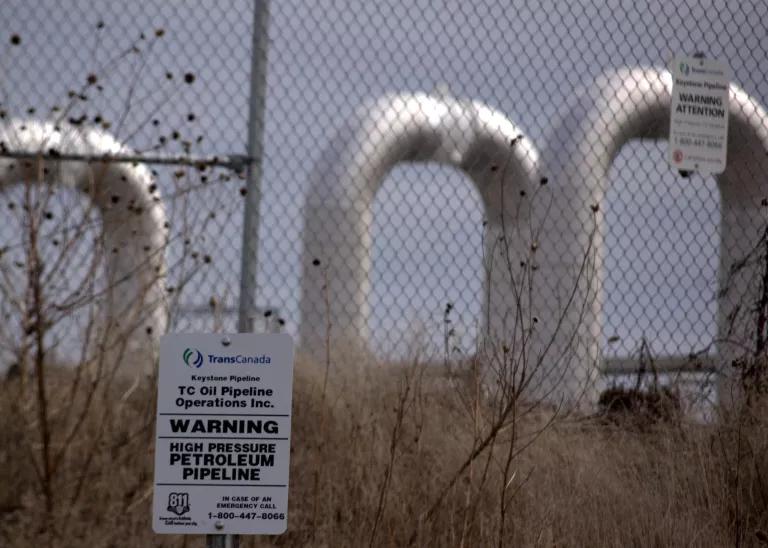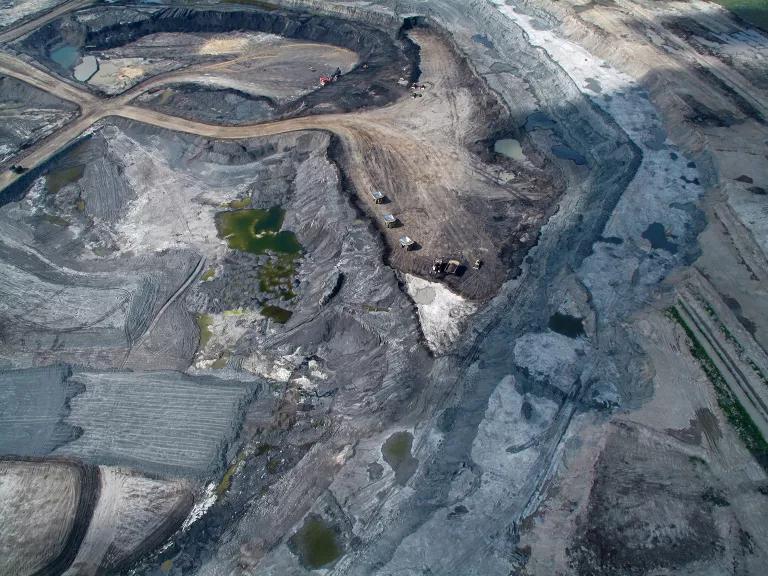Life After KXL
It's the end of the line for the Keystone pipeline (probably), but not for battles over tar sands and climate.

Mitch Paine/Bold Nebraska
President Obama officially rejected the Keystone XL pipeline today, just days after TransCanada begged for a stay of execution. The application had been under consideration for nearly eight years, and arguing about KXL had become an industry all its own. (I guess the pipeline did deliver on some of those jobs promises.)
It’s the end of an era, though, and time to see what’s next for the major players.What’s next for the president?
Obama ought to keep his veto pen handy, just in case. Congressional Republicans have so far been quiet today about their reaction to the president’s decision, but they may yet use some legislative trickery to try to approve KXL against his wishes. (More on that below.)
GOP leaders have also spent this year pushing or preparing a raft of other anti-environmental legislation, including moves to weaken or kill the EPA’s limits on carbon pollution and the president’s proposal to limit methane emissions from oil and gas producers. Some Republican legislators also want to subject all federal regulations costing more than $100 million to prior congressional approval. (Never mind that EPA regulations wind up saving us as much as $691 billion in improved human and environmental health.)

Pete Souza/The White House
And for Mitch McConnell?
When Mitch McConnell became Senate majority leader at the beginning of the year, he let it be known that approving Keystone XL was his first priority, to demonstrate his ongoing commitment to fossil fuels (which spent more than $60 million to elect friendly lawmakers in the midterms). To that end, he’s already sent one KXL bill to the president's desk, which resulted in a veto. He must now decide whether he’s made his point or must press on.
If they choose to press on, McConnell and his allies in the House might, for example, slip KXL approval into a budget reconciliation bill, which cannot be filibustered. Even budget bills, however, are subject to vetoes. In 1995, Republicans tried to open the Arctic National Wildlife Refuge to oil drilling through the appropriations process. President Clinton vetoed the entire federal budget to block that single measure.
What’s going to happen to all the erstwhile pipeline land?
TransCanada bought hundreds of miles of property easements from U.S. landowners to clear a path for the pipeline. If it decides to abandon the project, it could sell those rights to other companies, even if the easements were purchased from unwilling landowners through eminent domain. (Permissive eminent domain laws in many states allow companies to do almost whatever they want with the property once they have it.) Expect fights between property owners and TransCanada to continue.
What will anti-KXL activists do now?
There’s little time to celebrate. Bold Nebraska, the group that spearheaded the fight against KXL in the Cornhusker State, plans to keep fighting efforts to weaken public review of pipelines and other environmentally damaging projects, like fracking.
And TransCanada?
Fossil fuel companies and their ilk are used to getting what they want from Washington. Soon after today's announcement, TransCanada said it would try again.
Even without KXL, TransCanada will also look for other ways to ship tar sands crude to refineries. Discerning the details of its post-Keystone contingency plan is difficult, though, because the company did so much bluffing during the pipeline debate. In 2011, for example, TransCanada told Nebraska it would be “impossible” to alter the pipeline’s route. Less than a month later, it agreed to reroute it.
Last year, TransCanada’s CEO said the company was “absolutely considering a rail option” as an alternative, but that’s probably also bogus. Crude-by-rail is neither profitable nor politically popular (given its reputation for explosions). The company’s most likely next move is to push for the Energy East pipeline, which is already promising to be another hotly contested pipeline battle.
What’s next for tar sands?
Existing tar sands mines will continue to produce crude. KXL’s demise, however, is a major threat to expansion. Tar sands mines are expensive to start up. Even when oil was selling for more than $90 per barrel, several companies canceled their planned tar sands projects. The price per barrel is now in the mid-$40s, making tar sands crude uneconomic—even if there were a pipeline to transport it cheaply to refineries.
Without KXL, fewer companies will want to take a chance on tar sands. Just as important, the pipeline’s rejection sends a signal to investors that politicians and the public are concerned about the impacts of tar sands on the climate.
And finally, what's going to happen with all that pipe?
TransCanada was once so confident that Keystone XL would win approval that the company contracted the manufacture of 661,670 tons of pipe—most of what was required for KXL. The company has not said exactly how much pipe it already has on hand, but a 2011 report from Cornell University identified 70,000 tons that had been received in U.S. ports. The number is now likely much higher than that.
Don’t worry, waste hawks—TransCanada won’t landfill the pipe. The company needed federal approval for KXL only because it crossed national borders. It can likely repurpose much or all of the pipe for its many other pipelines that have been approved in the United States and Canada. If that doesn’t work, sale is always an option. Anybody looking for a few hundred miles of 36-inch pipe?
This article was originally published on onEarth, which is no longer in publication. onEarth was founded in 1979 as the Amicus Journal, an independent magazine of thought and opinion on the environment. All opinions expressed are those of the authors and do not necessarily reflect the policies or positions of NRDC. This article is available for online republication by news media outlets or nonprofits under these conditions: The writer(s) must be credited with a byline; you must note prominently that the article was originally published by NRDC.org and link to the original; the article cannot be edited (beyond simple things such grammar); you can’t resell the article in any form or grant republishing rights to other outlets; you can’t republish our material wholesale or automatically—you need to select articles individually; you can’t republish the photos or graphics on our site without specific permission; you should drop us a note to let us know when you’ve used one of our articles.




Liquefied Natural Gas 101
The Uinta Basin Railway Would Be a Bigger Carbon Bomb Than Willow
How to Ditch the Biggest Fossil Fuel Offenders in Your Life